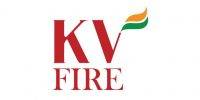 Fire protection systems are sometimes viewed as a “black hole” by power generation engineering, operations and maintenance personnel. The main reason is that major fires are a rare event and the systems designed to prevent them are seldom called to duty. Unlike production equipment, in which a design/engineering/installation flaw will be discovered quickly, flaws in fire protection equipment may not be evident until the post-fire investigation. Thus, if the fire protection equipment fails to function immediately and flawlessly, the money and effort expended in providing this equipment is wasted.
Fire protection systems are sometimes viewed as a “black hole” by power generation engineering, operations and maintenance personnel. The main reason is that major fires are a rare event and the systems designed to prevent them are seldom called to duty. Unlike production equipment, in which a design/engineering/installation flaw will be discovered quickly, flaws in fire protection equipment may not be evident until the post-fire investigation. Thus, if the fire protection equipment fails to function immediately and flawlessly, the money and effort expended in providing this equipment is wasted.
To the layman, substandard protection, or lack of protection altogether, may not be readily apparent; however, the author has run across multiple situations which beg the question: “Why didn’t they do it right in the first place?” Deficient fire protection installations increase the owner’s property damage and forced outage risks, decrease the operator’s personnel safety and result in a less desirable account in the eyes of the insurance company.
This article examines five common design and engineering problems in the area of fire protection systems, analyzing the nature of the problems and how to prevent them. Supporting references are also provided.
Problem #1: Inadequate Acceptance Testing of Gas Turbine Enclosure Gaseous Fire Extinguishing Systems
Gaseous fire extinguishing systems, such as carbon dioxide, Inergen, FM-200 and others, need to build up to a minimum agent concentration by volume to extinguish flame. Each gas has a different design concentration (the minimum theoretical concentration plus a factor of safety). This requires a “tight” space, so that the discharged gas concentration can accumulate. Gas turbine generator enclosures are one of the most difficult spaces to keep tight, primarily because they are designed for disassembly so that the equipment may be maintained, repaired or removed. In addition, large volumes of air for cooling usually pass through the enclosure. Also, the enclosure’s “tightness” deteriorates over time as door and panel seals disintegrate, or as modifications are made to accommodate new equipment.
To overcome these problems, the fire protection designer usually increases the agent gas supplies and/or provides an extended agent discharge to compensate for agent losses. In addition, governing fire protection standards require that a full acceptance test be performed before commissioning the fire protection system. For CO2 systems, the 2005 Edition of NFPA 12, Carbon Dioxide Extinguishing Systems, requires that “a full discharge test shall be performed on all systems”. This involves actuating the CO2system under simulated operating conditions (including all fans on and all dampers open) and measuring the actual CO2concentration with a properly calibrated analyzer.
For halon-alternative systems (Inergen, FM-200 and others), the 2004 Edition of NFPA 2001 requires that “quantitative results shall be obtained and recorded to indicate that the specified agent concentration for the specific duration…is in compliance…using an approved blower fan unit.…” This involves special testing equipment known as a door fan test apparatus. In some cases, the authority having jurisdiction (the local fire prevention bureau, the insurance carrier or both) does not request this test. In other cases, the owner and/or builder forgo the necessary testing due to cost.
Note, however, that NFPA 12, Appendix A.4.4.3 specifically states that “factors such as extra cost and interruptions to production or business operations are not considered valid reasons for waiver of full discharge tests”. In several cases, the CO2 discharge test was precluded based on the reasoning that if one gas turbine package had successfully passed the test, then other identical packages should pass by default. This reasoning is flawed because not every enclosure has the identical “tightness” level. Also, hardware and installation faults have been known to affect test results. NFPA 12, Formal Interpretation No. 12-00-1, clarifies that it is the Technical Committee’s intent that a full discharge test be performed on every system and that a full acceptance test needs to be performed on every turbine-generator enclosure fire suppression system. The acceptance test needs to include a complete system operational test and a full discharge of CO2 system while measuring the concentration over the necessary duration. The acceptance test needs to be thoroughly documented, with the documents filed with the plant’s permanent records for future reference.
Problem #2: Failure to Consider Adjacent Sprinkler System Operation
 NFPA and insurance carrier standards have strict requirements concerning the acceptability of a fire protection water supply. In the fire protection industry, a water supply must meet the requirements of both an “adequate” and a “reliable” supply. The term “adequate” refers to the water supply’s ability to meet the pressure and flow rate requirement of the highest demand fire protection system. This standard is straightforward and generally well within the abilities of a competent mechanical engineer. The challenge occurs when the water supply must supply multiple fire protection systems simultaneously. Such situations arise when a postulated fire is expected to actuate more than one fire protection system. Typical examples include turbine bearing and below-deck systems, multiple cooling tower cells, coal conveyors and coal handling structures and adjacent transformers [2005 edition of NFPA 850, section 6.2.1(b)].
NFPA and insurance carrier standards have strict requirements concerning the acceptability of a fire protection water supply. In the fire protection industry, a water supply must meet the requirements of both an “adequate” and a “reliable” supply. The term “adequate” refers to the water supply’s ability to meet the pressure and flow rate requirement of the highest demand fire protection system. This standard is straightforward and generally well within the abilities of a competent mechanical engineer. The challenge occurs when the water supply must supply multiple fire protection systems simultaneously. Such situations arise when a postulated fire is expected to actuate more than one fire protection system. Typical examples include turbine bearing and below-deck systems, multiple cooling tower cells, coal conveyors and coal handling structures and adjacent transformers [2005 edition of NFPA 850, section 6.2.1(b)].
Adjacent fire areas and the operation of more than one fire protection system need to be considered in fire protection design. When the flow rates of multiple systems are added, they must be balanced to the system with the higher pressure demand. A good fire protection system designer will ensure that the pressure demand of multiple systems are relatively close. This avoids penalizing the flow rate of a system that must be balanced to a much higher pressure than it was designed for. This is done by selecting nozzle diameters and the proper diameter pipe segments to control friction losses. NFPA standards offer guidelines in different standards, including NFPA 13, 15, 214 and 850.
Problem #3: Unreliable Water Supply
A water supply is a system that consists of a body of water and a means to deliver water at pressure. For most electric generating stations, this includes one or more connections to a municipal waterworks or a private system consisting of one or more fire pumps and a suction source. As before, the water supply must be reliable as well as adequate. Reliability refers to water availability during adverse conditions, such as during freeze/drought conditions, mechanical problems and other unforeseen events. This means redundant water supplies are preferred. A lake or major river is typically considered reliable. If a suction tank, such as a raw water tank is considered, it must be arranged to ensure a dedicated volume of fire protection water is available at all times. NFPA 850 requires a two-hour minimum, but the insurance carrier may request a longer duration. This duration is based on the largest, or the simultaneous operation of the largest, fire protection systems plus the required hose streams. According to NFPA 850, a suction tank should be automatically refilled within eight hours from a source capable of replenishing the required two-hour volume.
A cooling tower basin may appear to be an attractive and inexpensive fire pump suction supply. Unless two cooling towers are provided, with one fire pump on each basin, cooling tower basins are generally not considered to be reliable because the basin is emptied, sometimes as often as annually. Without an adequate suction source, the entire plant is without fire protection water. While raw water tanks are occasionally emptied for inspection and repair, the frequency is usually lower than that for cooling tower basins. Tanks typically can last more than 20 years without needing to be emptied. Smaller plants with lower values or plants that do not depend so heavily on water-based fire protection systems may be an exception where a cooling tower basin is adequate. Unfortunately, NFPA 850 offers little guidance on reliability thresholds. Insurers typically have their own standards as to what constitutes a reliable supply based on values and loss estimates. However, these standards tend to be subjective. What is reliable to one insurer may not be to another.
Occasionally, a plant may receive all of its fire protection water from a municipal or outside private supply, such as an industrial park. This does not necessarily mean, however, that the supply is reliable. The engineering and/or maintenance of such a supply may not meet the standards required to address the risks associated with an electric generating station. In that case, an acceptable cost-saving reliability enhancement may be to provide a backup supply, such as a diesel-driven pump that takes suction from a treated water tank. If a municipal or external private water system is the sole fire protection water supply, it should be examined in detail by a qualified expert during the planning stage, with a written report made available to interested parties.
Reliability also is affected by routine maintenance and testing. In almost all cases, two automatic fire pumps-one diesel and one electric, which take suction from a tank with a dedicated fire volume-is the universally preferred method. This leaves no doubt as to the reliability. The insurer hould be consulted as to the acceptability of a water supply. One option for an owner who is undecided is to conduct a quantitative risk-based analysis. Such a study gives a scientific conclusion of whether a particular expense is justified, based on risk. This study and its conclusions, if performed by a credentialed fire protection expert, may also be acceptable to the insurer.
Problem #4: Substandard Protection for Steam Turbine-Generator
While it is not unusual for older units to lack fire protection systems, some plants less than five years old have been built with no bearing fire protection, no fire protection for the area below the operating deck, or without either. Since the 1950s, studies by independent research and insurance firms show that properly designed and installed fire protection systems protect the turbine-generator from fire-induced damage, significantly reducing the loss potential and eliminating lost income due to forced outages.
To our knowledge, there is not a single documented case where the actuation of a properly designed and installed fire protection system resulted in significant damage to a turbine-generator. Yet dozens of documented cases exist where a fire has destroyed one or more generating units, sometimes resulting in a permanent plant shutdown. Surprisingly, some operations personnel continue to oppose automatic fixed fire protection systems for the turbine-generator. While an analysis of the benefits of sprinkler/ waterspray protection for turbine-generators is outside the scope of this article, the cost-benefit of such protection favors such systems. Therefore, the bearing seal areas and oil lines should be protected by an automatic preaction directional waterspray system. What’s more, the area beneath the turbine-generator operating floor where oil could flow, spray or accumulate should be protected by automatic sprinklers. (For a more thorough discussion on the topic of fire protection of turbine-generators, refer to “Steam Turbine Fire Protection Will Reduce Repair Costs”, Power Engineering, November 2002.)
 Problem #5: Cooling Tower Protection
Problem #5: Cooling Tower Protection
The emergence of fiber-reinforced plastics (FRP) in cooling tower construction has led some manufacturers to think that FRPs are noncombustible and that their towers do not need automatic sprinkler protection. Since FRP cooling towers have not been around very long, we are not aware of any actual fire experience involving them. Therefore, this discussion is subjective. Although some tower manufacturers routinely state that individual construction and fill materials have been evaluated in accordance with various standards such as ASTM E84, this does not make them non-combustible. It is important to understand that the ASTM E84 test is a comparison test conducted under a controlled environment and measures flame spread and smoke density developed. It is not intended to classify a material’s combustibility or heat release rate.
According to ASTM, this test “…does not by itself incorporate all factors required for fire-hazard or fire-risk assessment of the materials, products, or assemblies under actual fire conditions.” NFPA 214 specifically states that “these [ASTM E84] test methods do not duplicate the larger extent of the hazards in its final installation and are not necessarily suitable or generally satisfactory for materials that soften, flow, or melt under fire conditions”. The 2000 edition of NFPA 214 further defines non-combustible as “a material that, in the form in which it is used and under the conditions anticipated, will not ignite, burn, support combustion, or release flammable vapors when subjected to fire or heat. Examples of non-combustible materials are concrete, masonry, tile and metal.”
The only relevant test which precludes the need for automatic sprinkler protection is the Factory Mutual Research Approval for the complete tower. Therefore, unless the fill and construction materials are of concrete, masonry, tile or metal or are otherwise proven as noncombustible, they should be considered combustible. Therefore, automatic sprinkler protection for non-FM-approved FRP cooling towers is usually necessary.
Substandard fire protection systems are a lose-lose situation. The plant and its assets are not adequately protected and, at best, initial savings will be offset by higher insurance premiums throughout the life of the plant. At worst, personnel injury or death is at stake. Fire protection design and engineering are as specialized as control systems, structural design or combustion design and require knowledge and expertise. The initial proper fire protection design will benefit the plant, its operator and its owner for many years.




















































